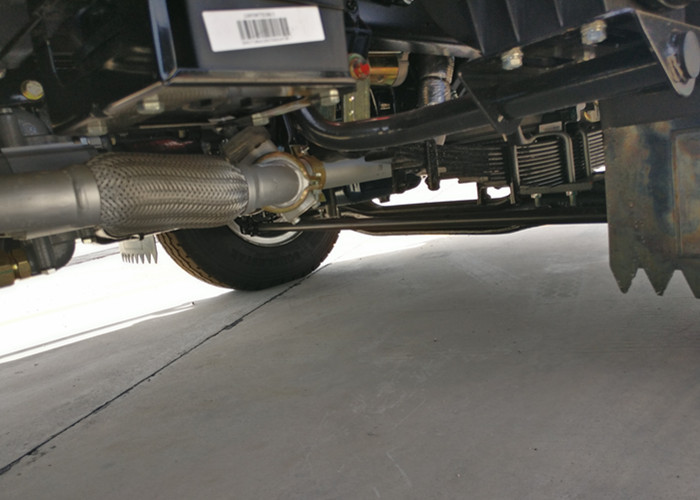Introduction
Water trucks are a vital support system in various industries, ranging from construction to agriculture. Understanding the capacity of these trucks and how much water they can carry not only helps in planning but also impacts efficiency and costs. But how much water is actually in a water truck tank? This article dives deep into the specifics, capacity calculations, practical tips, and more, outlining everything you need to know about water truck tanks.
What is a Water Truck?
A water truck is a specialized vehicle designed to transport and deliver water for various applications. These trucks are commonly used for dust control, road maintenance, irrigation, or even firefighting. Their primary feature is a tank that holds large volumes of water, influencing their design and operation.
Water Truck Tank Capacities
Standard Water Truck Sizes
The size of a water truck tank can vary significantly based on its intended use. Here are some common sizes:
| Truck Type | Tank Capacity (Gallons) |
|---|---|
| Light-duty Water Truck | 1,500 – 3,000 |
| Medium-duty Water Truck | 3,000 – 6,000 |
| Heavy-duty Water Truck | 6,000 – 12,000+ |
Factors Affecting Tank Capacity
Several factors affect how much water a water truck tank can hold:
- Truck Size: Larger trucks naturally have bigger tanks.
- Design: The design of the tank influences how efficiently it can carry water.
- Material: The material used for the tank construction (e.g., steel, aluminum) can affect weight and durability.
How to Calculate Water Volume in a Tank
Calculating the amount of water in a tank is essential for logistics. To determine the water volume, you can use the basic formula:
Volume = Length × Width × Height
However, for a cylindrical water truck tank, the formula would be:
Volume = π × (Radius²) × Height
Example Calculation
Suppose you have a cylindrical water tank with a radius of 3 feet and a height of 10 feet. The volume would be calculated as follows:
Volume = π × (3²) × 10 ≈ 282.74 cubic feet
To convert cubic feet to gallons, use the conversion factor of one cubic foot = 7.48 gallons:
Volume in gallons ≈ 282.74 × 7.48 ≈ 2112.7 gallons
Water Delivery Applications
Construction Sites
Water trucks are often employed on construction sites for dust control. Maintaining moisture levels helps reduce dust, making the environment safer for workers and nearby residents.
Agriculture
Farmers use water trucks for irrigation, transporting water to areas that lack adequate water resources. This technique ensures crops receive the necessary hydration to grow efficiently.
Firefighting
In rural areas, water trucks are essential during fire emergencies. They can quickly supply water to firefighters, ensuring faster containment of wildfires.
Maintenance Tips for Water Truck Tanks
Regular Inspections
Always carry out regular inspections on your water truck tank to ensure there are no leaks or damages. This can prevent unexpected water loss and ensure safe operations.
Cleaning the Tank
Periodically, clean the inside of the tank to remove sediments, algae, and other contaminants that may affect water quality. A clean tank ensures better delivery of potable water.
Monitor Water Levels
Use water level indicators or gauges to monitor how much water is in the tank. This helps with planning deliveries and avoids running out of water during critical tasks.
The Cost of Water Truck Services
Factors Influencing Costs
The cost of hiring a water truck service can vary based on:
- Distance: Transportation costs often depend on how far the truck must travel.
- Water Source: Some sources may have higher extraction costs.
- Delivery Frequency: Regular deliveries might come with bulk discounts.
Average Cost Estimates
The typical rates for water truck services can range as follows:
| Service Type | Cost per Gallon | Cost per Truckload |
|---|---|---|
| Residential | $0.50 – $1.00 | $100 – $300 |
| Commercial | $0.30 – $0.70 | $150 – $400 |
Environmental Considerations
Water Conservation
Using water trucks responsibly can contribute to water conservation. Ensure that water is used efficiently and avoid over-irrigation in agricultural practices.
Regulatory Compliance
Be aware of local regulations regarding water extraction and delivery, particularly in drought-prone areas. Non-compliance can lead to significant fines.
Choosing the Right Water Truck
Consider Your Needs
When choosing a water truck, consider the following:
- Volume Requirements: Assess how much water you need for your specific applications.
- Terrain: Ensure the truck can navigate your work area’s terrain efficiently.
Brand Reputation
Select brands with good reputations for quality and service. Research customer reviews and seek recommendations.
FAQ
1. How often should water trucks be cleaned?
It’s recommended to clean water trucks every 3-6 months, or after transporting non-potable water.
2. Can water trucks be used for potable water delivery?
Yes, many water trucks are designed to deliver potable water, provided they meet specific sanitation standards.
3. What is the maximum capacity of a water truck?
The maximum capacity can exceed 12,000 gallons, depending on the truck size and design.
4. How do you measure the amount of water in a tank?
You can use water level indicators, gauges, or manual calculation (as discussed earlier).
5. Are there specific certifications for water trucks?
Yes, trucks delivering potable water must meet certain health and safety standards set by local and state regulations.
6. What types of trucks are best for different applications?
Light-duty trucks are suitable for small jobs, while heavy-duty trucks are necessary for larger, more intense applications like firefighting or large-scale agriculture.





